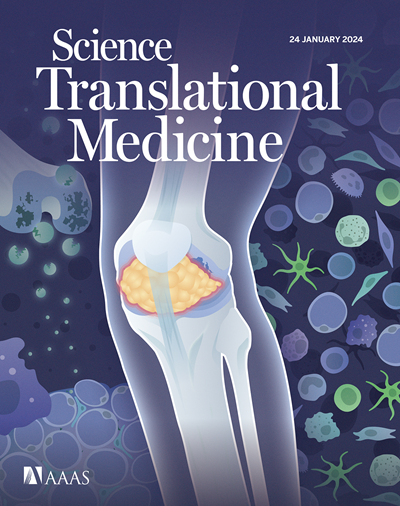A single-cell atlas of circulating immune cells over the first 2 months of age in extremely premature infants
IF 15.8
1区 医学
Q1 CELL BIOLOGY
引用次数: 0
Abstract
Extremely premature infants (EPIs) who are born before 30 weeks of gestation are susceptible to infection; however, the trajectory of their peripheral immunity is poorly understood. Here, we undertook longitudinal analyses of immune cells from 250 μl of whole blood at 1 week, 1 month, and 2 months from 10 EPIs and compared these with samples from healthy adults and with preterm and full-term cord blood samples. Single-cell suspensions from individual samples were split to perform single-cell RNA sequencing, T and B cell receptor sequencing, and phosphoprotein mass cytometry. The trajectories of circulating T, B, myeloid, and natural killer cells in EPIs over the first 2 months of life were distinct from those of full-term infants. In EPIs, peripheral T cell development rapidly progressed over the first month of life, with an increase in the proportion of naïve CD4极早产儿前2个月循环免疫细胞的单细胞图谱
妊娠30周前出生的极早产儿(EPIs)易感染;然而,他们的外周免疫的轨迹知之甚少。在这里,我们对10名epi患者在1周、1个月和2个月时250 μl全血中的免疫细胞进行了纵向分析,并将这些样本与健康成人样本以及早产儿和足月脐带血样本进行了比较。从单个样品中分离单细胞悬液,进行单细胞RNA测序,T和B细胞受体测序,以及磷酸化蛋白细胞计数。EPIs出生后2个月的循环T、B、骨髓和自然杀伤细胞的轨迹与足月婴儿不同。在EPIs中,外周T细胞的发育在出生后的第一个月迅速进展,naïve CD4 +、调节性和循环性T细胞的比例增加,同时伴有更大的STAT5(信号换能器和转录激活器5)信号。足月婴儿EPI记忆CD4 + T细胞表现出T辅助1 (t1)优势,而中央记忆样T细胞的t1偏态,来自2个月EPI的B细胞表现出增加的激活和分化特征。与足月婴儿的细胞相比,来自2个月大EPIs的B细胞和T细胞都显示出增加的干扰素特征。总之,我们证明了利用微量血液对epi进行纵向多组学分析的可行性,并开发了一种描述epi中外周免疫发育的资源,该资源表明epi在生命早期持续激活。
本文章由计算机程序翻译,如有差异,请以英文原文为准。
求助全文
约1分钟内获得全文
求助全文
来源期刊

Science Translational Medicine
CELL BIOLOGY-MEDICINE, RESEARCH & EXPERIMENTAL
CiteScore
26.70
自引率
1.20%
发文量
309
审稿时长
1.7 months
期刊介绍:
Science Translational Medicine is an online journal that focuses on publishing research at the intersection of science, engineering, and medicine. The goal of the journal is to promote human health by providing a platform for researchers from various disciplines to communicate their latest advancements in biomedical, translational, and clinical research.
The journal aims to address the slow translation of scientific knowledge into effective treatments and health measures. It publishes articles that fill the knowledge gaps between preclinical research and medical applications, with a focus on accelerating the translation of knowledge into new ways of preventing, diagnosing, and treating human diseases.
The scope of Science Translational Medicine includes various areas such as cardiovascular disease, immunology/vaccines, metabolism/diabetes/obesity, neuroscience/neurology/psychiatry, cancer, infectious diseases, policy, behavior, bioengineering, chemical genomics/drug discovery, imaging, applied physical sciences, medical nanotechnology, drug delivery, biomarkers, gene therapy/regenerative medicine, toxicology and pharmacokinetics, data mining, cell culture, animal and human studies, medical informatics, and other interdisciplinary approaches to medicine.
The target audience of the journal includes researchers and management in academia, government, and the biotechnology and pharmaceutical industries. It is also relevant to physician scientists, regulators, policy makers, investors, business developers, and funding agencies.
 求助内容:
求助内容: 应助结果提醒方式:
应助结果提醒方式:


